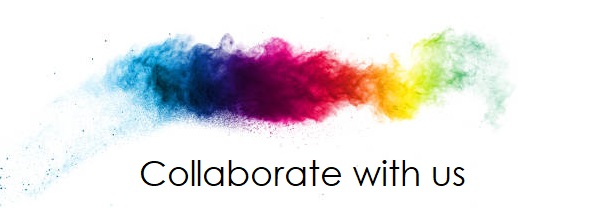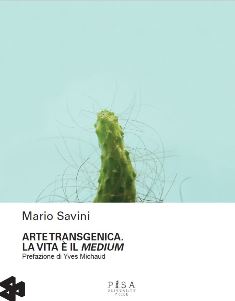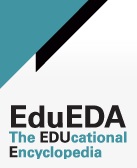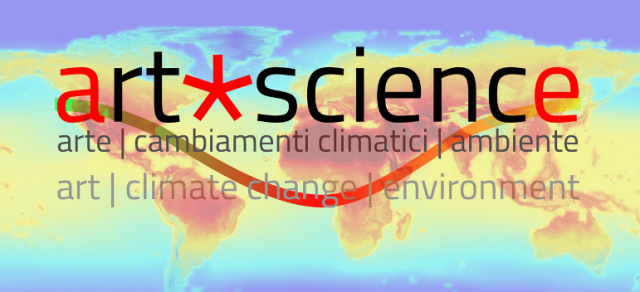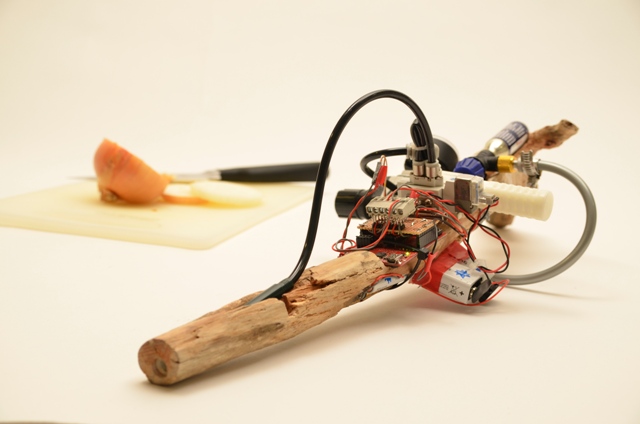
Project Genesis
Synthetic Biology – Life from the Lab
August 2 – September 9 2013
This is one of the most explosive recent developments in the natural sciences. One that’s overwhelmingly experimental and even conceptual to some degree. Its initial breakthroughs seem nearly as fantastic as the bright future prospects it could open up. Virtually apocalyptic, on the other hand, are the potential negative scenarios. Our topic: synthetic biology. Now, Linz’s Ars Electronica Center is devoting a new exhibition to what can rightfully be called Project Genesis—first of all, to make people aware of the current state of scientific research in this field; also to spotlight artistic commentary on these developments. The show features 18 works by artists from Australia, Austria, France, Germany, Great Britain, India, Ireland, Japan, Latvia, Spain and Switzerland. The exhibition is being accompanied by workshops and an educational program to get across essential basics like how information is transformed first into binary code and then into DNA sequences.
Synthetic Biology – The Science of Artificial Life
What’s the point of putting up street lights when we can make trees glow? Why not revive extinct species or even create new ones? And wouldn’t it be wonderful to permanently protect ourselves from viruses and disease by inscribing the necessary genetic code right into our chromosomes?
Alchemists of the early modern period were already dreaming of creating life in a test tube. But it was only over the course of the last century that scientists succeeded in gaining a deeper understanding of the fundamentals of life. A major milestone was the Human Genome Project launched in the 1990s and wrapped up in 2003. The outcome was nothing less than the complete sequencing of the human genome. A breakthrough that unleashed tremendous impetus for further development. Ever since, scientists have been making an all-out effort not only to use individual genetic building blocks for specific purposes but also to create life forms. Initial successes like the synthesis of the artificial bacteria Mycoplasma mycoides JCVI-syn1.0 by a team headed by American biochemist Craig Venter prove that it’s already possible not only to read genetic information but to write it too. Scientists thus become designers whose first creation will be “minimal organisms,” creatures that consist solely of vital system components. And this paves the way to generating creatures that have specific, presumably desirable uses for our society.
BioArt
Biological art is a 21st-century art form. Those who create it work primarily with organic materials and use methods, findings and devices from natural sciences such as biotechnology and genetic engineering. Their workplace is a hybrid setting—half atelier, half laboratory. The output ranges from genetically engineered rabbits to images of bacteria populations. The works are not displayed on a canvas or screen, but on a culture medium in a Petri dish. The term BioArt was coined by Eduardo Kac (BR) who works in this art form.
Project Genesis at the Ars Electronica Center
The Project Genesis exhibition extends through two levels of the Ars Electronica Center. The works are grouped into four thematic clusters: Biomedia, Synthetic Hybrids, Genetic Ethos and Citizen Science. In the 1st Upper Level, there’s also a workshop area where visitors can get a do-it-yourself-style introduction to synthetic biology. Distributed about both levels are definitions and explanations of key fundamental concepts like genome, biology, BioArt and DNA. Scientific and artistic positions are serially juxtaposed throughout the exhibition. The artistic works are distributed about these spaces, occupying what is at first glance a dominant position, whereas the presentation of the state of scientific research has been “marginalized.” Like parentheses, the contents of these prints on the walls circumscribe the artistic perspectives and thereby configure a setting for reflection upon and discussion of what “Synthetic Biology – Life from the Lab” ultimately means.
Cooperating Partners
The “Project Genesis” exhibition at the Ars Electronica Center showcases a series of projects created under the auspices of Studiolab, an initiative funded by the 7th EU Framework Programme for Research, Technological Development and Demonstration. Studiolab is designed as a platform for innovation at the nexus of science, art and design. As its name suggests, its mission is to amalgamate an artist’s studio and a scientific research laboratory. Studiolab partners are Science Gallery, Trinity College (Dublin), Le Laboratoire (Paris), The Royal College of Art (London), Ars Electronica (Linz), MediaLab-Prado (Madrid), ISI Foundation (Turin), Synergetica Lab (Amsterdam), Ecole de Recherche Graphique (Brussels), Leonardo-Olats (France), CIANT International Centre for Art and New Technologies (Prague), RIXC Centre for New Media Culture (Riga), Medical Museion (Copenhagen) and the Bloomfield Science Museum (Jerusalem).
Project Genesis
Synthetic Biology – Life from the Lab
Genetic Ethos
New technologies have rapidly increased the speed at which DNA is being sequenced and, at the same time, substantially reduced the cost of doing so. Legal regulations have a hard time keeping up when it comes to the question of who actually owns the genetic information of living creatures and can administer it. Today, modifications to the genetic code of a living organism are already being patented just like any other invention. Once they obtain this legal protection, companies, labs and scientists can specify how the code will subsequently be used. So it’s no wonder that courtrooms all over the world have long been scenes of legal disputes about a valuable asset: genetic information.
David Benque (UK): The New Weathermen (2013)
How can we prevent impending climate change? Do we have to swear off new technologies? Or just the opposite: use them more intensively and more effectively? The New Weathermen are a fictional group of activists who believe they have found the answer to climate change in synthetic biology. A series of testing stations and experiments are designed to make people aware of the group’s larger mission.
The New Weathermen: http://studiolab.di.rca.ac.uk/projects/the-new-weathermen
Superflux (UK/IN): Dynamic Genetics vs. Mann (2013)
The case of Dynamic Genetics versus Arnold Mann will apparently result in a finding for the plaintiff, a major corporation in the genetic therapy industry. Extensive evidence—videos, photographs, documents—makes a strong case that Arnold Mann illegally possesses patent-protected DNA. “Dynamic Genetics vs. Mann” is a thought experiment that gives a foretaste of what could be reality in the near future. Someday soon, it just might be that nation-states renounce their responsibility for citizens’ health care and turn over the job to private providers of individually tailored health insurance. The company then scans the whole genome of every policyholder and, depending on the presence of certain gene combinations that increase the probability of diseases like cancer, adjusts the amount of the premiums accordingly.
Dynamic Genetics V Mann: http://studiolab.di.rca.ac.uk/projects/dynamic-genetics-v-mann
Hideo Iwasaki (JP) / Oron Catts (AU): Biogenic Timestamp (2013)
“Biogenic Timestamp” shows that bacteria are capable of internalizing our technological creations and modifying them. In the case study carried out by this project, electronic components are subjected to genetically modified blue-green algae. These cyano-bacteria are among the most primitive forms of life. Due to their ability to perform photosynthesis, they depend on light energy. The tiny creatures ingest elements like silicon, gold and iron from the computer hardware, reorder them, and thereby completely disorganize the linear logic of the human-made electronic circuits.
Synthetic Aestetics: http://www.syntheticaesthetics.org/residents/iwasaki-catts/Synthetic%20Biology
Johanna Schmeer (DE/UK): Mousetraps No. 3, 14 and 18
What happens when we modify living creatures and then set them free? Johanna Schmeer designed three mousetraps custom-tailored to genetically and technologically modified mice like the ones now used in testing labs. Due to a genetic defect, Waltzing Mouse suffers from an equilibrium disorder, which means it can only move in circles. It’s caught in a spiral-shaped tube in which it can’t turn around. Cyborg Mouse has a brain implant that controls its movements; its mousetrap attracts it with a strong magnetic field and thereby renders it incapable of moving. Birdsong Mouse developed by Japanese researchers to sing like a bird is lured by the tweeting of birds from a loudspeaker.
Mousetraps: http://www.johannaschmeer.com/MOUSETRAPS-NO-3-14-18
Shiho Fukuhara (JP) / Georg Tremmel (AT): Common Flowers / White out (2009)
The blue carnation developed by a company named Florigene Ltd. was the first commercially available genetically engineered plant. It’s still being marketed worldwide. Carnations had already come in lots of pretty colors, but blue wasn’t one of them until the implanted gene of a petunia made a previously white carnation turn blue. “Common Flowers / White Out” addressed this transformation process and developed strategies to enable laypeople to remove genes that had been implanted into genetically engineered plants. But efforts to completely reverse such interventions raise questions. Does a plant whose original genetic makeup was restored still have to be considered genetically engineered? And to whom do these life forms belong?
Common Flower: http://www.common-flowers.org/
Hideaki Ogawa (JP): Momentrium (2012-2013)
“Momentrium” consists of two illuminated arrows. The arrow labeled “#1 Core” suspended from the ceiling points towards the core of Earth, the planet on which we live. The arrow refers to gravity, to a constant. The second, horizontally positioned arrow labeled “#2 Future” refers to the future of those beholding it and, in contrast to the first arrow, continuously changes the direction in which it points. This is meant to get across the fact that our future will indeed not remain on a constant course; rather, its route can change step by step.
Matthew Gardiner (AU): Synthetic Memetic (2013)
“Never Gonna Give You Up”—this song by British pop singer Rick Astley topped charts worldwide in the 1980s. Now, more than 20 years later, as “Rick Rolling,” it’s still causing a commotion online. Users who click on some seemingly innocuous headline, image or video are unexpectedly redirected to Rick Astley’s catchy tune. As a spinoff of this viral prank, artist Matthew Gardiner composed a DNA sequence in such a way that the series of bases in it correspond to the letters in the song’s title and integrate them symbolically into a pistol. It, in turn, is an allusion to a method already being used by British police: deploying DNA sequences containing particular codes in order to mark suspicious persons with a shot from a special pistol.
Citizen Science
Although laws restrict access to certain chemicals and synthetically produced DNA, and the equipment necessary to create optimal laboratory conditions is still very costly, more and more people are refusing to let such hurdles prevent them from taking advantage of the experimentation opportunities open to them. A scientific mission—another step forward in the advancement of society—has top priority for most of these individuals.
Andy Gracie (ES): Deep Data Prototype_1 (2009)
What is the origin of life? Is there life beyond Planet Earth, and what are the future prospects of life forms traveling in outer space? Researchers in the field of astrobiology deal with precisely these questions, and they’re also the subject matter of “Deep Data Prototype_1.” In this experiment, micro-organisms less than 1 millimeter in length (tardigrades, commonly known as waterbears or moss piglets) are exposed to magnetic fields like those measured by the Voyager and Pioneer space probes on their journeys through our Solar System. The aim of this project is to observe the behavior of these very robust organisms, and thereby glean insights into how terrestrial life forms can survive in hostile environments in space and during extended journeys through space.
Deep Data: http://hostprods.net/projects/deep-data/
RIXC (LV): Biotricity (2012)
“Biotricity” demonstrates that common, everyday waste water contains quite a bit of energy. Young scientists and artists experimented with microbial fuel cells, and then tested these “living batteries” in various environments. In sewage, they hit pay dirt! This material contains just the right substances to satisfy micro-organisms’ energy needs. When bacteria come into contact with it, they produce electrons that are attracted to the electrodes in the sewage. The upshot: chemical energy is transformed into electrical current. Continuous measurements deliver visible and audible impressions of this form of electricity generation. Someday, this technology could be used to upgrade waste treatment facilities into power plants.
Biotricity: http://vimeo.com/51380366
Rüdiger Trojok (DE): Gene Gun Hack (2012)
A gene gun is a bio-ballistics device used to shoot a particle of gold coated with DNA into a cell. Once inside, the injected DNA can separate from its carrier particle and become integrated into the cell’s genetic material. The gene gun is thus one of the most important tools used in modern biology. Many of today’s genetically modified plants have been produced with this technology. But at several thousand euros apiece, its high retail price meant that only professional labs could afford to own this equipment. Then, biologist Rüdiger Trojok succeeded in building a gene gun of his own, and in slashing the cost to a mere 50 euros.
Gene Gun Hack: https://labitat.dk/wiki/File:Rudiger_Trojok_gene_gun_hack-v01.pdf
Hackteria.org (CH): Lab in a Box (2013)
DIY Mobile Gen Lab – Hackteria Object Collection
You don’t need extremely expensive lab equipment any more to be able to work with bacteria and micro-organisms. Now there’s Lab-in-a-Box, a conveniently packaged collection of simple, affordable technologies that enable people interested in performing biology research to conduct their experiments at home. This idea comes from Hackteria.org, an international network of artists and scientists. The results of their collaboration are sophisticated kits that are tested and upgraded at a series of workshops. In the spirit of open source, construction manuals for all the components are publically available and everything can be modified and adapted as the user sees fit.
Lab In A Box: http://hackteria.org/
Alexandra Daisy Ginsberg (UK): The Synthetic Kingdom (2009)
Synthetic biology makes it possible to extract DNA codes from existing organisms found in nature and to use these biological building blocks to configure new forms of life. But to which groups do we assign this “natural” life created by human beings? The taxonomy system developed in the 18th century by Carl Linnaeus that distinguishes only between plants and animals has long been deemed obsolete. Today, cellular life forms are usually divided into three groups: archaea, one-celled ur-bacteria; bacteria in the cells of which free DNA can be found; and eukaryotes including all forms of life whose cells have a nucleus—i.e. human beings, animals and plants. Artist Alexandra Daisy Ginsberg now suggests expanding this “tree of life” by grafting on a branch for synthetica, artificially engineered life forms.
The New Tree of Life: http://www.daisyginsberg.com/projects/synthetickingdom.html
Biomedia
Synthetic biology is opening up undreamt-of possibilities. Humankind will soon be able to engender new forms of life containing precisely those qualities specified by its engineer-creator. But what effects will this have on our biosphere? Like no other tool that humankind has ever brought forth, synthetic biology must be dealt with responsibly.
Science Gallery (IE): Opimilk (2013)
To produce the painkillers of the future, the pharmaceutical industry’s sterile infrastructure will no longer be necessary. The barn of a dairy farm is just as suitable if the cows housed in it are endowed with new features. The idea of this Dublin-based team is to transform the bovine organism into a living bioreactor to produce effective medications that can be milked right from the cow’s utter. The first step is to isolate the gene of the painkiller opiorphin from human saliva. Then it’s cultivated and injected into a fertilized egg cell of a bovine recipient. When the calf to which it gives birth grows to an adult cow, the painkiller is contained in its milk, which can also be processed into dairy products like cheese and yogurt.
Le Laboratoire (FR): Organight (2013)
In the city of the future, bacteria will take over the job of illuminating the streets at night. Mounted on large picture windows, they store solar energy during the day while also absorbing some of the city’s CO2 emissions. Just like a sticker, Organight can simply be applied to a pane of glass. So it’s not only great as “natural” lighting for thoroughfares; it can also be used as bright, attractive decor on shop windows. Organight is powered by synthetically modified bacteria, Bacillus subtilis and Lux Operon, embedded between two layers of foil. This biodegradable source of illumination lasts for several months. It’s another step in the direction of energy independence and an environmentally friendly urban habitat.
Organight: http://www.youtube.com/watch?v=PAAvdHKeXvg#at=12
Theresa Schubert (AT): ChromaPhy+ (2013)
ChromaPhy+ is worn like a bracelet. It uses various color codes to provide vital information—for example, a warning of the presence of dangerous ultraviolet rays, a timely hint to hydrate, current data like body temperature or relative humidity, and even updates about the wearer’s biological clock and sleep cycle. The living display in ChromaPhy+ makes use of the characteristics of a slime mold species, Physarum polycephalum, and of chromatophores, pigment-containing organelles found in the cells of chameleons.
Chromo Phy+: http://www.theresaschubert.org/chromaphy.html
Sonja Bäumel (AT): Metabodies (2013)
We human beings are walking biotopes. Billions of bacteria live on and in our bodies. Every day, wherever we go, we carry around 2-3 kilograms of them with us, and thus 100 times more genetic information than our own human genome contains. To make the hidden diversity of this personal ecosystem visible, “Metabodies” focuses our attention on the bacteria’s communications. To do so, it utilizes an effect that scientists call quorum sensing. As soon as the bacteria are present in sufficient numbers, exchange of chemical substances takes place among them and they begin to glow. This effect also occurs when a bacterial impression of our skin is introduced into a culture medium where bacteria can flourish undisturbed. The visual result opens up a completely new way of looking at our body, and makes us cognizant of the fact that that we differ from one another not only genetically but also bacterially.
Sonja Bäumel / Bacteria: http://www.sonjabaeumel.at/bacteria
SYNTHETIC HYBRIDS
Nature possesses scant possibilities to bring forth completely new life forms from one generation to the next. Crossing two different species quickly leads to a genetic cul-de-sac. A horse and a donkey can indeed produce a mule, but this hybrid is unable to reproduce. Nevertheless, quite a few crossed plant species are very much in a position to yield seeds that pass on superior traits. But what happens when human beings exploit technology to evade natural reproduction, and to create synthetic hybrids that have never before existed in this world?
Tobias Revell (UK), Royal College of the Arts: Into Your Hands Are They Delivered (2013)
Genesis, the first book of the Bible, relates how God created the world and the creatures therein, and granted human beings dominion over all. Artist Tobias Revell’s project—the title of which is a reference to Genesis—deals with the family Ichneumonidae, wasps that lay their eggs in the bodies of other insects, whereupon the larvae devour their hosts from within. How can it be that these creatures, whose principle of life seems so cruel, are the creation of a benevolent God? And are we human beings really higher than the animals? Where is the boundary between humanity and nature, and where are the weak points in this seemingly so strict segregation?
Into Your Hands They Are Delivered: http://studiolab.di.rca.ac.uk/projects/into-your-hands-are-they-delivered
Patricia Piccinini (AU): The Listener (2012)
This humanoid figure that Patricia Piccinini’s crew painstakingly put together out of silicon, fiberglass and human hair doesn’t seem the least bit threatening. With a friendly look on its face, it seems to be seeking acceptance and hoping that we’re not put off by its strangeness. Patricia Piccinini admonishes us that, even if we human beings are capable of modifying and forming nature and its creatures according to our own conceptions, we mustn’t lose our capacity for empathy in doing so.
Newborn: http://www.roslynoxley9.com.au/artists/31/Patricia_Piccinini/1259/43783/
Hybrid Art
Since 1987, the Prix Ars Electronica has been an interdisciplinary showcase honoring excellence in the use of the computer as a universal design medium in work at the interface of art, technology and society. The Prix Ars Electronica has become a reliable barometer of current trends in media art, not least of all due to the participation of internationally renowned artists from 70 countries. As one of seven competitive categories, Hybrid Art specifically focuses on hybrid and transdisciplinary projects in which the accent is on merging different media and genres into new forms of artistic expression, on crossing the boundaries between art and science, on social and political commitment and activism, as well as on reconnoitering realms of pop cultural.
Tag: Ars electronica


